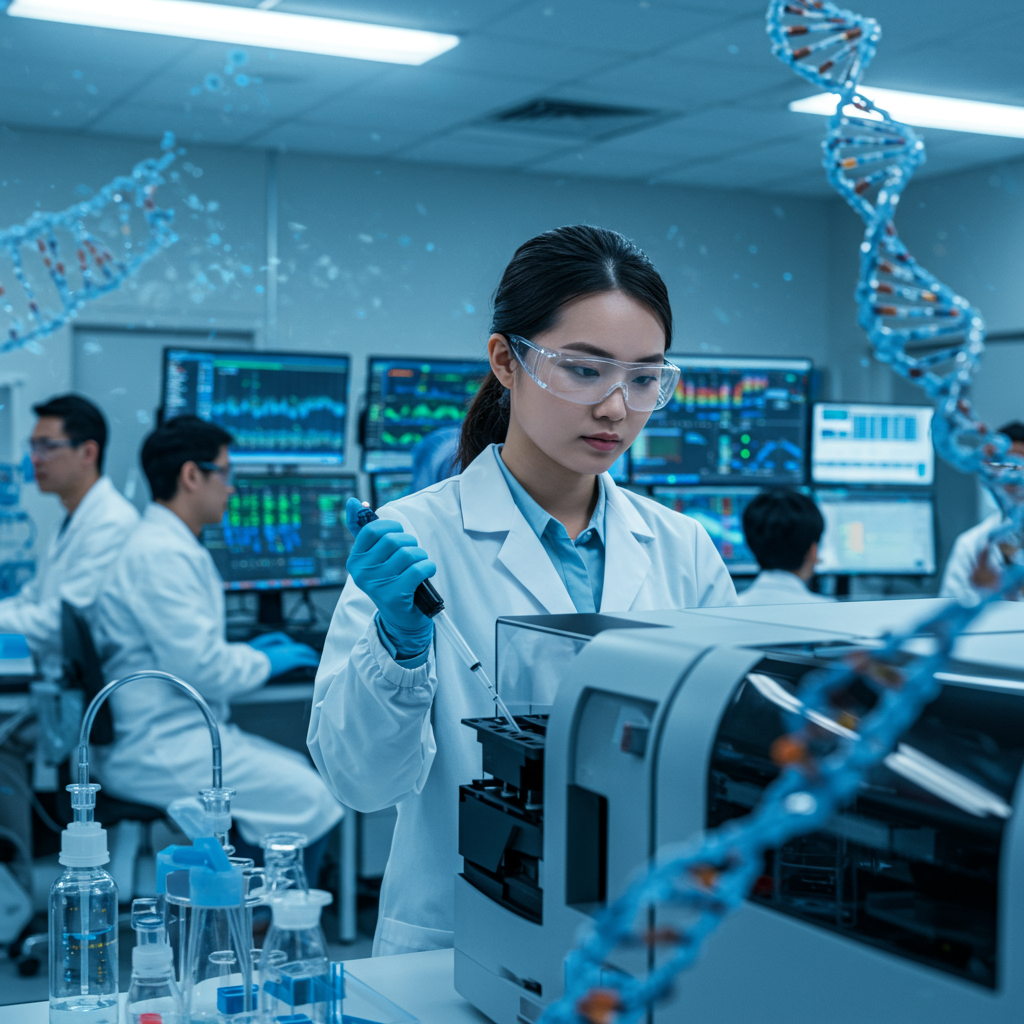A groundbreaking project is underway that aims to build artificial human DNA entirely from scratch. This ambitious initiative, known as the synthetic Human Genome Project (SynHG), has sparked significant debate within the scientific community and the wider public. Researchers believe this cutting-edge work could unlock unprecedented potential for treating incurable diseases and revolutionizing medicine, while critics raise profound ethical questions about the implications of synthesizing the very building blocks of life.
The SynHG project has received substantial initial funding of £10 million (equivalent to approximately Rs 117 crore) from the Wellcome Trust, one of the world’s largest medical research charities. This financial backing signals a major push into the field of synthetic biology, specifically targeting the complex challenge of creating a human genome outside of living cells. Scientists from several leading UK universities, including Oxford, Cambridge, Imperial College London, the University of Kent, and the University of Manchester, are collaborating on this five-year endeavor, alongside the Ellison Institute of Technology (EIT) at Oxford.
Building Life’s Code: The Science Behind SynHG
Human DNA is often described as the instruction manual for life. It’s composed of nucleotides arranged in specific sequences that carry all our genetic information. The SynHG project proposes to synthesize these sequences, effectively constructing DNA molecules in a laboratory setting without starting from existing biological templates.
The initial phase of the project focuses on a proof-of-concept milestone: creating a fully synthetic human chromosome. This represents approximately two percent of the entire human genome. If successful, this step would demonstrate the feasibility of synthesizing much larger portions, with the ultimate goal potentially being the construction of a complete synthetic human genome in the future.
Unlike the historic Human Genome Project, which focused on “reading” the sequence of existing human DNA, SynHG aims to “write” or create it. This ability to build genetic code from the ground up is seen by proponents as the next frontier in biological research and biotechnology.
Potential breakthroughs in Medicine
Scientists involved in the SynHG project highlight the transformative potential for healthcare. By being able to construct and manipulate DNA sequences directly, researchers could gain a deeper understanding of how genes function and how they contribute to health and disease.
“The sky is the limit,” stated Dr. Julian Sale from the MRC Laboratory of Molecular Biology in Cambridge, who is part of the project team. He envisions therapies that could lead to healthier aging, reducing the burden of age-related diseases. The technology could also be used to engineer disease-resistant cells. These cells might then be used to repair or replace damaged tissue in organs like the liver and heart, or even to bolster the immune system.
Professor Matthew Hurles, director of the Wellcome Sanger Institute, emphasized that building DNA allows researchers to test theories about how it works. “We can test out new theories,” he explained, “because currently we can only really do that by tweaking DNA in DNA that already exists in living systems.” Creating synthetic DNA provides a unique experimental platform.
Professor Jason Chin, founding director of the Generative Biology Institute at EIT, echoed this sentiment. He believes the capacity to synthesize large genomes, including human cell genomes, could fundamentally change our grasp of genome biology. This could have a profound impact on the future landscape of biotechnology and medicine. Researchers hope this work will accelerate treatments for numerous incurable diseases and develop safe, targeted, cell-based therapies, potentially answering currently unforeseen questions about health and wellbeing.
Navigating the Ethical Minefield
Despite the promising therapeutic goals, the SynHG project faces significant ethical scrutiny and public concern. The idea of deliberately creating human DNA from scratch prompts questions about humanity’s role in shaping life and the potential for unintended consequences.
Some critics fear the technology could be misused. Professor Bill Earnshaw, a genetic scientist at Edinburgh University known for his work on artificial chromosomes, warned that the technology could be rapidly commercialized. He expressed concern that if organizations with the necessary equipment decided to synthesize genetic material, it might be difficult to regulate or stop them, suggesting “the genie is out of the bottle.”
Dr. Pat Thomas, director of the campaign group Beyond GM, raised concerns about the potential for harm. While acknowledging that scientists typically intend to do good, she highlighted that powerful scientific advancements can sometimes be repurposed for harmful applications, including potential use in warfare. Fears have also been voiced regarding the possibility that such technology could eventually lead to attempts to create enhanced or modified humans.
Project organizers are aware of these concerns. Professor Chin noted that alongside developing synthesis tools, the project is actively addressing the social, ethical, economic, and policy questions that will inevitably arise as this technology progresses. Crucially, the project team has explicitly stated that all work will remain confined to laboratory settings. There will be no attempt to create synthetic life forms outside of test tubes and dishes.
Public Reaction and The Road Ahead
Initial reactions to the news on social media platforms were mixed. Some users expressed dystopian fears, referencing science fiction scenarios where such experiments go terribly wrong. Comments like “Corporate grown employees coming soon” or “Can’t see this going wrong in a sci-fi horror type way at all” reflect anxieties about the potential for unforeseen negative outcomes.
Conversely, others expressed optimism about the potential health benefits. One user shared a personal experience, noting how the ability to address genetic issues like eczema could significantly improve quality of life. This highlights the dual nature of the public perception – a mix of profound hope for medical advancement and deep-seated caution regarding powerful new biotechnologies.
The SynHG project represents a bold step into the frontier of synthetic biology. While the potential for revolutionizing medicine through tailored therapies and a deeper understanding of genetic function is immense, the ethical considerations and potential for misuse are significant and require careful, ongoing public and scientific dialogue. The success of the initial proof-of-concept phase and how the project navigates these complex ethical waters will determine the future trajectory of synthetic human genome research.
Frequently Asked Questions
What is the SynHG project and what does it aim to do?
The SynHG, or Synthetic Human Genome Project, is a scientific initiative aiming to create human DNA entirely from scratch in a laboratory. Funded initially by the Wellcome Trust with £10 million, its primary goal is to develop new tools and methods for synthesizing genetic material. The project aims to achieve a proof of concept by building a synthetic human chromosome (about 2% of the genome) with the ultimate ambition to synthesize the entire human genome for research purposes. This is intended to accelerate the development of treatments for various diseases and advance our understanding of life.
Which universities and institutions are involved in the SynHG project?
The SynHG project is a collaborative effort involving several prominent institutions. Key participants include researchers from major UK universities such as the University of Oxford, University of Cambridge, Imperial College London, the University of Kent, and the University of Manchester. They are working alongside the Ellison Institute of Technology (EIT) at Oxford. The project is led by scientists affiliated with these institutions, receiving its initial funding from the Wellcome Trust, a major global medical research charity.
What are the main ethical concerns raised about creating artificial human DNA?
Creating artificial human DNA has triggered significant ethical debate. Concerns include the potential for the technology to be misused, such as for developing enhanced or modified humans, or even for harmful applications like warfare, as noted by critics like Dr. Pat Thomas. There are also worries about rapid commercialization and the difficulty of regulating who can synthesize genetic material, as raised by Professor Bill Earnshaw. Project scientists emphasize that they are proactively addressing these issues and stress that the work is confined to lab settings, with no attempt to create synthetic life outside the lab.




